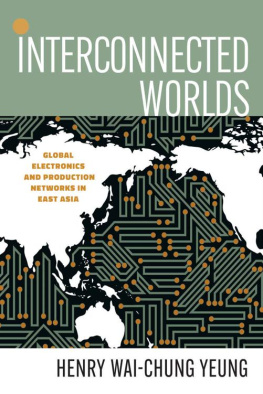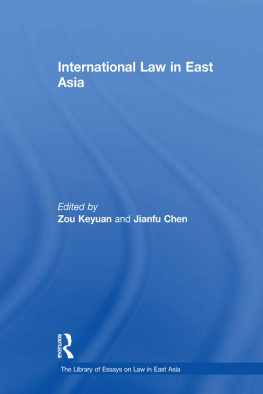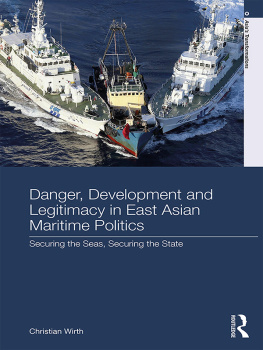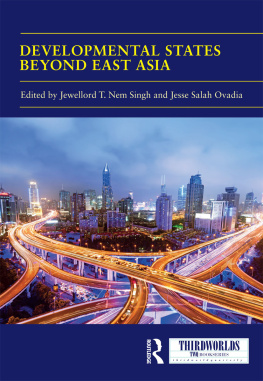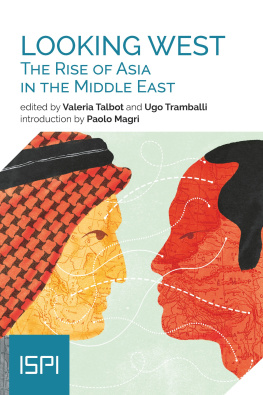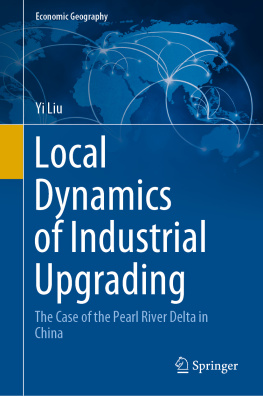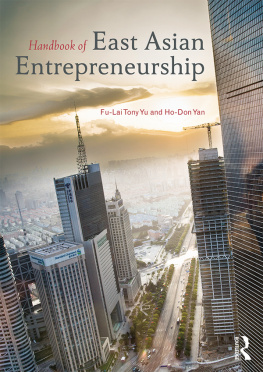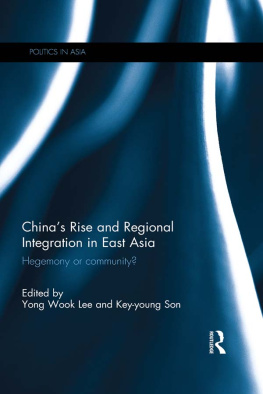Strategic Coupling
East Asian Industrial Transformation in the New Global Economy
Henry Wai-chung Yeung
Cornell University Press
Ithaca and London
To Weiyu, Kay, and Lucasfor accompanying me throughout this long march
Contents
Tables
Figures
Preface and Acknowledgments
This book has taken me a very long time to write. But I have learned a great deal from the scholarship by writing it, and I am much happier with the work in this final form. It reflects my personal journey through East Asian development, first as a beneficiary, then as a student, and now an analyst. Growing up as a teenager in Hong Kong and Singapore during their formative decade of the 1980s, I experienced firsthand this transformative development in two of the four East Asian tiger economies. Still, I benefited much more than just being someone living in these rapidly developing city-states. I had the fortune of studying them as well!
My first encounter with the developmental state literature was in late 1992 when I embarked on my doctoral research under the supervision of Peter Dicken at the University of Manchester, England. Thanks to Peters insightful knowledge of the then-emerging field of searching for the miraculous East Asian developmental model, I had the early advantage of reading writers who have since become giants in this field of the political economy of East Asian development. Looking at my well-worn copy of Robert Wades Governing the Market (1990)bought at the university bookstore in Manchester in March 1993evokes in me a strong reminiscence of the early excitement as a keen student of East Asian industrial transformation. Then I read with intense interest all the other classics, such as Chalmers Johnsons MITI and the Japanese Economic Miracle (1982), Frederic Deyos The Political Economy of the New Asian Industrialism (1987), Alice Amsdens Asias Next Giant (1989), Stephan Haggards Pathways from the Periphery (1990), and so on. Here, I pay tribute to all these thinkers for laying the solid intellectual foundation on which this book is predicated.
Since this early period of my interest in the East Asian developmental state, I have consistently followed this rapidly growing literature after my return to the National University of Singapore in 1995. Collectively, this enormous developmental state literature has prompted a heated debate on the role of the state in governing the market by getting the prices wrong and by promoting selective domestic firms as national champions. Authors in this literature have argued forcefully and demonstrated empirically that state-directed initiatives through industrial policy and credit allocation led these East Asian economies to industrialize rapidly, catching up with advanced industrialized economies in North America and Western Europe. As more books, book chapters, and journal articles were published in the second half of the 1990s and throughout the 2000s on this state-led industrial transformation, I began to witness at the same time a new dynamic mechanism of economic development at work in East Asia that went beyond this domestic statist force.
Since 2004, my research into the leading domestic firms in Singapore, Taiwan, and South Korea has pointed to a new direction of theorizing industrial transformation in an increasing interconnected world economy. Instead of being driven primarily by their home states, these national firms have taken over the leadership of industrial transformation through their dynamic articulation into complex global production networksthis is the mechanism of strategic coupling that forms the core focus of this book. Conceived as a major contribution to this debate on the changing role and continuity of the state in East Asian economies, this book aims to reshape the ways in which we understand the political economy of economic development and evolutionary state-firm relations in these three East Asian economies. I argue that the developmental statist approach to industrial transformation and economic development in these East Asian economies has often ignored the complex and dynamic coevolutionary nature of state-firm relations within the changing context of economic globalization. This work thus brings together the bottom-up approach in the developmental state literature with the more top-down perspective in the recent social science literature on global production networks and global value chains.
The theoretical and empirical research underpinning this book clearly benefits from my longstanding collaboration with different colleagues. My theoretical work on global production networks has its deep roots in the Manchester school originating in the early 2000s. I thank Peter Dicken, Jeffrey Henderson, Neil Coe, Martin Hess, and Jennifer Johns for their comradeship and support. Neil Coe, in particular, has recently rejoined my department, and our collaboration in this research has since deepened and led to our coauthored work Global Production Networks published in 2015 and our jointly directed Global Production Networks Centre (GPN@NUS). Philip Kelly, Weidong Liu, and Kris Olds are also my early partners in crime in this endeavor toward understanding complex production networks in the global economy.
My empirical work on the three East Asian economies has its origin in a major research project starting in 2004. I am very grateful to the more than one hundred top executives and senior government officials who acceded to our personal interview requests and shared generously their knowledge of East Asian development. The promise of anonymity means that I cannot name any of them here. My two NUS collaborators in this project, Yong-Sook Lee and Jang-Sup Shin, have made fundamental contributions to my empirical analysis in this book. I am most indebted to their role in collecting the interview data on domestic firms and state institutions in South Korea. Our outstanding research assistant, Angela Leung, deserves a special commendation for her dedicated assistance throughout the several years of fieldwork in all three economies (plus Hong Kong). Liu Yi, my former Ph.D. student, also helped compile some of the statistics used in the book.
In Taiwan, Jinn-Yuh Hsu (National Taiwan University) and Tain-Jy Chen (Chung-Hua Institution for Economic Research) were very kind in hosting my multiple visits to Taipei and were most generous with their time and resources. Jinn-Yuh, Bruce Tan, Daniel Yang, Sue-Ching Jou, and their graduate students in NTU Geography kept me well entertained and in good spirits during extended field trips. All this empirical work would not have been possible without the sustained financial support of the National University of Singapore over the past ten years. In the second half of 2006, I spent several months of sabbatical leave in Hong Kong and Japan during which more empirical data were collected. I thank Eric Ramstetter at the International Centre for the Study of East Asian Development in Kitakyushu, Japan, and George Lin at the University of Hong Kong for their strong friendship and support in securing me generous visiting professorships in both institutions.
Translating this protracted theoretical and empirical research into an actual book has been a Herculean task that necessitates a whole new set of benefactors. The writing of this book started in 2010 when I was on the NUS Humanities and Social Sciences Faculty Research Fellowship for one semester. The book proposal was written in November 2012 when I was on the Residency Fellowship at the Rockefeller Foundations beautiful Bellagio Study and Conference Center in Italy. I thank Kishore Mahbubani for nominating me to the foundation and Catherine Weaver and Eric Sheppard for their careful reading and constructive comments on my book proposal. Other fellow academic residents at the Bellagio Center offered very useful suggestions and stimulating discussions: Laurie Brand, Ruth Fincher, Helga Leitner, Valerie Preston, Anne Salmond, and Michael Webber. Pilar Palaci, the Bellagio Centers managing director, and her dedicated team provided the most amazing hospitality that made Villa Serbellonis tranquility and serenity just so heavenly for all of us. Working on my manuscript in the villas private study overlooking the magnificent Lake Como was simply a once-a-lifetime experience. The finalization of the entire manuscript for first submission was completed during my sabbatical leave at the School of Geosciences, University of Sydney, Australia, in 2013. I thank the University of Sydney for its visiting professorship appointment that enabled this crucial preparation, and my two wonderful hosts, Jeffrey Neilson and Bill Pritchard. An extended discussion with John Mathews over coffee in Potts Point was most fruitful.


